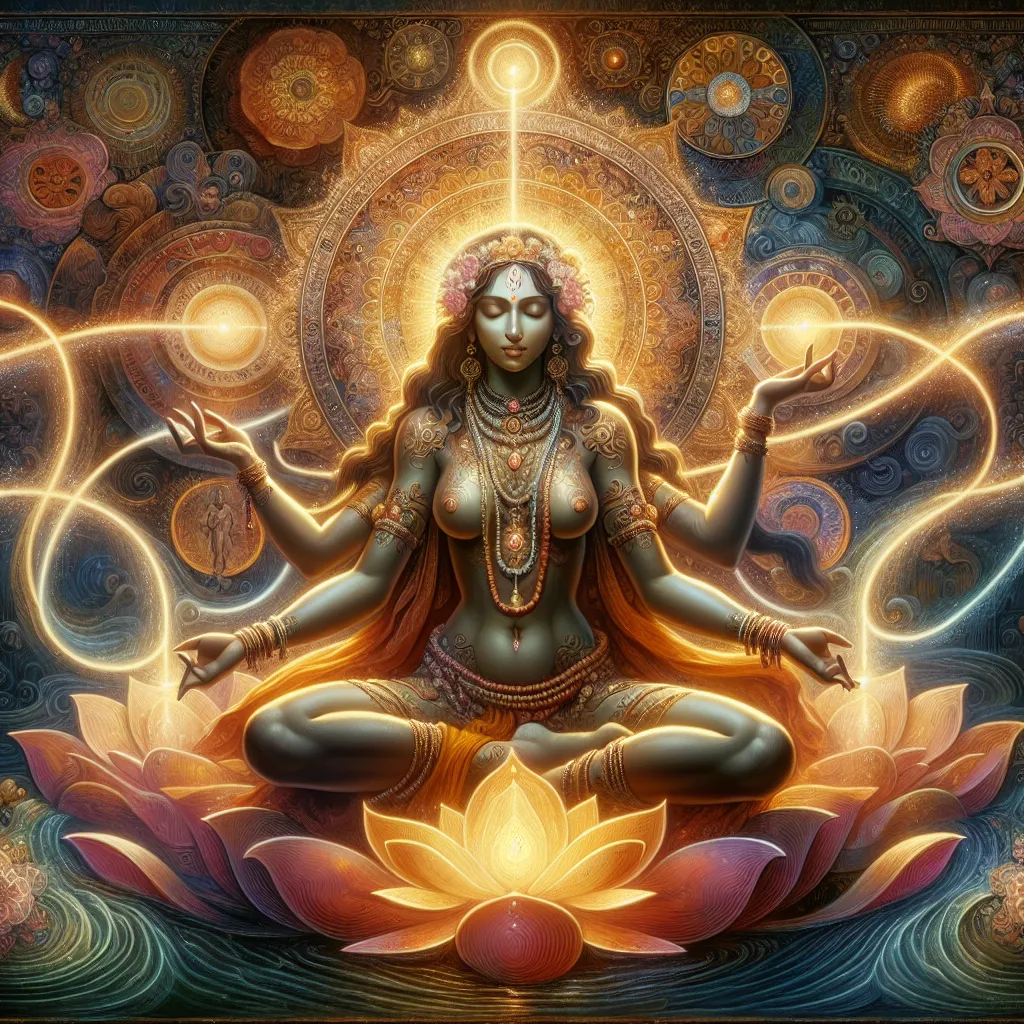
- Published on
- Authors

- Name
- You
The Goddess Worship in Tantra: An Enchanting Blend of Divine Femininity
Introduction
In the vast canvas of human spirituality and mystical traditions, Tantra holds a luminescent niche—a sacred space where spiritual and sensual seek unity. Among its most captivating elements is the worship of goddesses: divine embodiments of power, wisdom, and love. Central to this tapestry are figures like Kali, Durga, and Lalita Tripurasundari, each offering unique facets of divinity. Let us embark on a journey, blending advanced science and esoteric lore to illuminate their significance.
The Divine Trinity: Kali, Durga, and Lalita Tripurasundari
Kali: The Fierce Mother
Kali, often perceived as fearsome and formidable, is the epitome of time and change. She occupies a unique space where fear meets reverence. But beyond her dreadlock-laden appearance and garland of skulls lies an advanced concept: the dissolution of the ego.
| Aspect | Symbolism | Quantum Parallel |
|---|---|---|
| Cosmic Time | Transcending linear time | Non-linear time (superposition) |
| Destruction | Purging ignorance and illusions | Quantum decoherence, resetting the quantum system |
| Motherhood | Fierce protection, nurturing | Wavefunction collapse, potential into reality |
Durga: The Warrior Protector
Durga, riding a lion and wielding weapons, symbolizes the active and dynamic principle of the divine feminine. She is a multi-dimensional protector who vanquishes evils and restores Dharma (cosmic order). Durga's essence can be compared to the balance of forces in a quantum system, ensuring stability amidst chaos.
| Aspect | Symbolism | Quantum Parallel |
|---|---|---|
| Strength | The power to overcome obstacles | Quantum tunneling (overcoming energy barriers) |
| Protection | Guarding righteousness | Quantum entanglement (interconnected and protective) |
| Multi-armed | Capability and multi-tasking | Superposition (simultaneous states) |
Lalita Tripurasundari: The Divine Beauty
Lalita Tripurasundari is the epitome of divine beauty, grace, and benevolence, embodying the bliss of unity with the divine consciousness. She directs the seeker’s focus towards ultimate liberation through delight and play, signifying the joyful, creative aspect of the universe.
| Aspect | Symbolism | Quantum Parallel |
|---|---|---|
| Beauty | Sublime aesthetics and harmony | Symmetry and coherence in quantum states |
| Divine Play (Lila) | The joyful and playful nature of the universe | Quantum fluctuations (playing with virtual particles) |
| Liberation | Moksha, the ultimate freedom from cycles of rebirth | Quantum entanglement (union with universal consciousness) |
Mysticism Meets Quantum Mechanics
The worship of these goddesses in Tantra is not merely ritualistic; it mirrors underlying principles in modern quantum mechanics. Tantra and quantum physics, both seeking to unravel the fabric of reality, often converge in mystifying ways:
Interconnectedness: Just as in quantum entanglement where particles remain connected over vast distances, Tantric practices emphasize the web of interconnections between all beings, transcending space and time.
Transcendence of Duality: Tantra delves into non-dual consciousness, akin to quantum superposition where particles exist in multiple states simultaneously.
Transformation: Kali’s destruction is analogous to quantum decoherence, where the act of measurement collapses the wavefunction, creating a new state of reality.
Conclusion
The goddesses worshipped in Tantra—Kali, Durga, and Lalita Tripurasundari—offer profound insights into both the mystical and scientific realms. By understanding them, we not only embrace their spiritual significance but also find parallels in the quantum world, where the lines between science and spirituality blur into a unified cosmic dance. Through this enchanting exploration, we inch closer to enlightenment, one revelation at a time.
So, let us celebrate these divine figures, for in their worship, we honor the enchanting and intricate matrix of existence itself.
